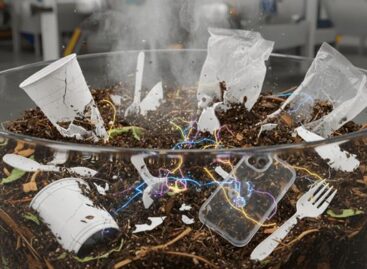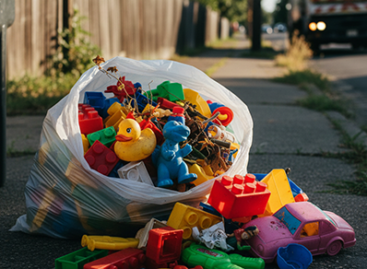Phone cases are seriously polluting the environment
Plastic cases are now an essential accessory for mobile phones, which protect the device but significantly pollute the environment. More than one billion of them are sold worldwide each year, the market value is expected to exceed $44 billion by 2033, and according to some estimates, more than 30 tons of phone case waste is generated annually. The current compilation of Körkörös.hu reveals why plastic mobile phone cases are environmentally polluting and what solutions are available to replace them.
 According to the Ipsos–TORRAS–WGSN research, consumers now expect not only protection from cases, but also convenience features: magnetic attachment, support, heat dissipation – with preferences varying by region. Cases are therefore increasingly becoming multifunctional devices, while their negative environmental impact is becoming increasingly significant. The vast majority of them are made of plastic and take hundreds of years to completely decompose in nature. They use a lot of energy and many chemicals during their production, and their global transportation releases significant greenhouse gases into the atmosphere. Most of the bags end up in landfills after use, and a significant proportion end up in the oceans, where they break down into microplastics over time, seriously endangering marine life.
According to the Ipsos–TORRAS–WGSN research, consumers now expect not only protection from cases, but also convenience features: magnetic attachment, support, heat dissipation – with preferences varying by region. Cases are therefore increasingly becoming multifunctional devices, while their negative environmental impact is becoming increasingly significant. The vast majority of them are made of plastic and take hundreds of years to completely decompose in nature. They use a lot of energy and many chemicals during their production, and their global transportation releases significant greenhouse gases into the atmosphere. Most of the bags end up in landfills after use, and a significant proportion end up in the oceans, where they break down into microplastics over time, seriously endangering marine life.
Medium.com reports that phone cases, when used or disposed of in the environment, release chemicals such as phthalates that can disrupt hormone systems and damage ecosystems.
According to GrandViewResearch.com, the growing smartphone usage, the need for device protection, and the demand for fashion and customization are continuously expanding the phone case market. The most popular material for cases is silicone, which accounted for over 56% of global revenue in 2024.

Source: GrandViewResearch
The environmental impact of phone cases depends significantly on the material they are made of. According to the article Thinking Sustainably, the most common materials – such as plastic, silicone, leather, rubber or carbon – all have different environmental impacts.
For example, Polycarbonate takes over a hundred years to decompose, but its surface can release toxic microparticles into the environment, which can even enter the food chain.
The production of silicone is an air pollutant, and the material is durable, so everything that ends up in the air and in nature has a long-term impact on the planet. Natural leather is not without its problems: chemicals used in animal husbandry and leather processing pollute soil and water bodies.
Rubber is less harmful, but it also releases chemicals when it breaks down. Carbon fiber cases are particularly energy-intensive to produce—14 times more energy than steel—and because they don’t decompose, they also increase the amount of waste.
According to the article, more than 30 tons of phone case waste is generated each year, which remains in the environment for decades.
The table based on the material from Körkörös.hu ThinkSustainaibly
Related news
How do plastics become soil killers? What should we pay attention to at Christmas to curb plastic dumping?
🎧 Hallgasd a cikket: Lejátszás Szünet Folytatás Leállítás Nyelv: Auto…
Read more >Christmas plastic dumping: why and how to reduce waste during the holidays?
🎧 Hallgasd a cikket: Lejátszás Szünet Folytatás Leállítás Nyelv: Auto…
Read more >Körkörös.hu: Plastic could still cover the ocean surface in a hundred years
🎧 Hallgasd a cikket: Lejátszás Szünet Folytatás Leállítás Nyelv: Auto…
Read more >Related news
The New Year’s Eve fireworks fair is back: temporary sales will start in department store parking lots at the end of December
🎧 Hallgasd a cikket: Lejátszás Szünet Folytatás Leállítás Nyelv: Auto…
Read more >The first Eastern European non-alcoholic beer turns 50
🎧 Hallgasd a cikket: Lejátszás Szünet Folytatás Leállítás Nyelv: Auto…
Read more >Sausage: pork prices are already going down, but they won’t be cheaper in stores – a significant correction may come in the spring at the earliest
🎧 Hallgasd a cikket: Lejátszás Szünet Folytatás Leállítás Nyelv: Auto…
Read more >






